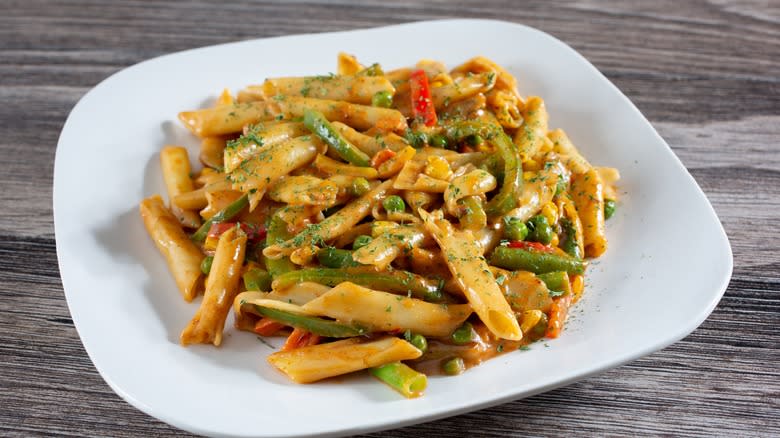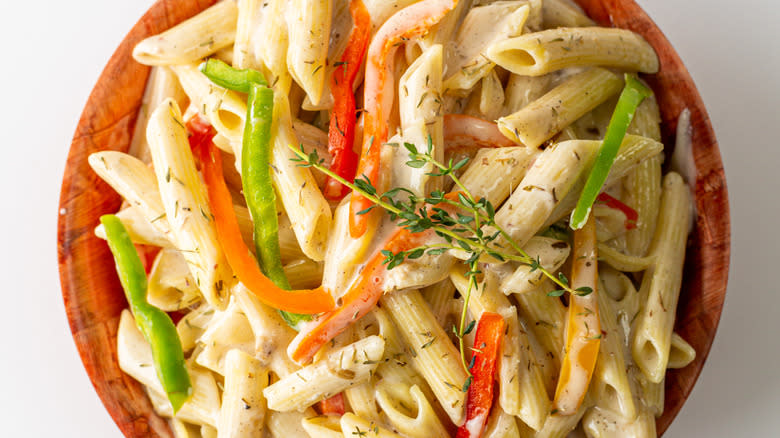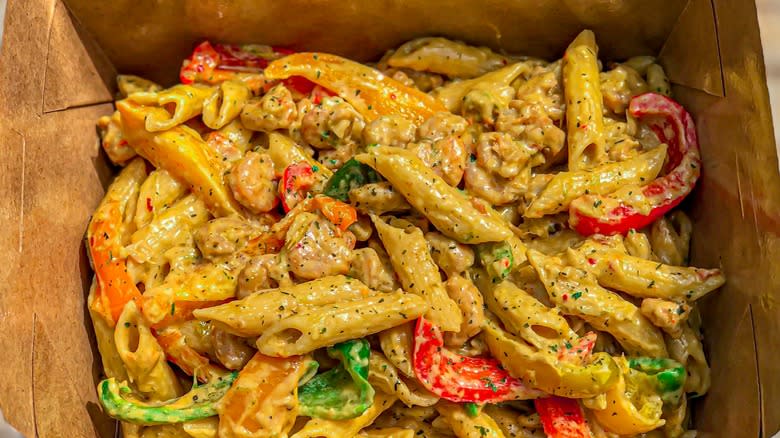Rasta Pasta Is The Creamy Jamaican Comfort Food You Need To Try

An incredible-tasting blend of cuisines from cultures both native and originally foreign to the island, Jamaican dishes are best known for their use of delicious and bold seasoning. And yet, one of the beautiful qualities of Jamaican food is that while its flavors are certainly complex, the cooking methods used to prepare it typically aren't. An excellent example of this, as well as everything else that makes their cuisine great, is rasta pasta.
Created by Jamaican Chef Lorraine Washington in 1985, rasta pasta makes use of not just classic jerk seasoning and chicken, but also pasta and a cream sauce that usually uses either heavy cream or coconut milk. The slightly spicy taste is a combination of African, Italian, and French influences that you aren't going to find anywhere else in the world. And the best part is since it's made in one pot, the process itself is relatively simple.
Read more: French Cooking Tricks You Need In Your Life
Marinating Helps Rasta Pasta's Strong Seasoning To Shine

So much of Jamaican food comes down to the seasoning and rasta pasta is no exception. The recipe makes use of classic jerk seasoning, which is a blend of things like salt, pepper, sugar, thyme, cinnamon, nutmeg, and allspice. It also calls for the use of protein like chicken or fish and includes a mixture of onions, hot peppers, garlic, and thyme that increases the flavor even more. From there, everything gets cooked in one pot, so cleanup is easy.
However, there's another step that amps up the flavor of the chicken in rasta pasta and allows the seasoning to shine — marinating. The chicken is soaked in a mixture of lime juice and water for around 15 to 20 minutes, after which it gets rinsed and patted dry. A lot of people believe this cleans the chicken, but that's not the advantage here. Instead, what's happening is that fruit enzymes tenderize and moisten the meat, allowing seasoning to soak in with much greater efficacy.
The Dish Was Named After The Colors Of The Rastafarian Flag

The name for the pasta itself has a story of its own. In the 1980s, Washington whipped up this dish for some construction workers consisting of pasta along with green ackee and red tomato sauce. The green, gold, and red colors — the same featured on the Rastafarian flag — inspired one of the diners to label it "rasta pasta." The moniker stuck, to the point where internationally the dish plays to the idea even today.
Though the meal evolved to use cream sauce instead of tomato sauce, it still makes use of the same color palette. In places where you can't easily get ackee, for example, green bell peppers are often used to represent the green inherent to rasta colors. The cream sauce is also liberally spiced with paprika or browning sauce to create the gold color you'd find on the flag.
So the next time you see this colorful pasta on a menu, give it a try, you won't be disappointed.
Read the original article on Daily Meal.

